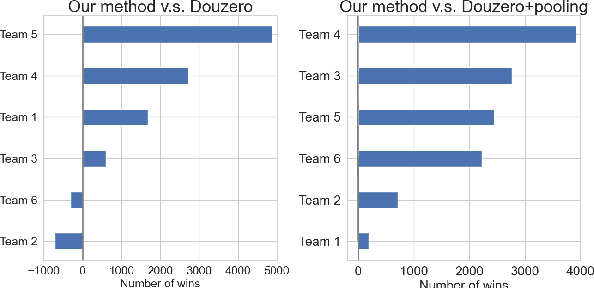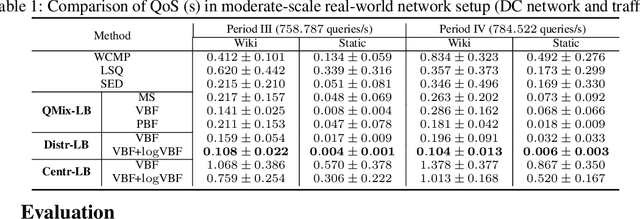Zhiyuan Yao
Inverse Knowledge Search over Verifiable Reasoning: Synthesizing a Scientific Encyclopedia from a Long Chains-of-Thought Knowledge Base
Oct 30, 2025Abstract:Most scientific materials compress reasoning, presenting conclusions while omitting the derivational chains that justify them. This compression hinders verification by lacking explicit, step-wise justifications and inhibits cross-domain links by collapsing the very pathways that establish the logical and causal connections between concepts. We introduce a scalable framework that decompresses scientific reasoning, constructing a verifiable Long Chain-of-Thought (LCoT) knowledge base and projecting it into an emergent encyclopedia, SciencePedia. Our pipeline operationalizes an endpoint-driven, reductionist strategy: a Socratic agent, guided by a curriculum of around 200 courses, generates approximately 3 million first-principles questions. To ensure high fidelity, multiple independent solver models generate LCoTs, which are then rigorously filtered by prompt sanitization and cross-model answer consensus, retaining only those with verifiable endpoints. This verified corpus powers the Brainstorm Search Engine, which performs inverse knowledge search -- retrieving diverse, first-principles derivations that culminate in a target concept. This engine, in turn, feeds the Plato synthesizer, which narrates these verified chains into coherent articles. The initial SciencePedia comprises approximately 200,000 fine-grained entries spanning mathematics, physics, chemistry, biology, engineering, and computation. In evaluations across six disciplines, Plato-synthesized articles (conditioned on retrieved LCoTs) exhibit substantially higher knowledge-point density and significantly lower factual error rates than an equally-prompted baseline without retrieval (as judged by an external LLM). Built on this verifiable LCoT knowledge base, this reasoning-centric approach enables trustworthy, cross-domain scientific synthesis at scale and establishes the foundation for an ever-expanding encyclopedia.
Open-FinLLMs: Open Multimodal Large Language Models for Financial Applications
Aug 20, 2024



Abstract:Large language models (LLMs) have advanced financial applications, yet they often lack sufficient financial knowledge and struggle with tasks involving multi-modal inputs like tables and time series data. To address these limitations, we introduce \textit{Open-FinLLMs}, a series of Financial LLMs. We begin with FinLLaMA, pre-trained on a 52 billion token financial corpus, incorporating text, tables, and time-series data to embed comprehensive financial knowledge. FinLLaMA is then instruction fine-tuned with 573K financial instructions, resulting in FinLLaMA-instruct, which enhances task performance. Finally, we present FinLLaVA, a multimodal LLM trained with 1.43M image-text instructions to handle complex financial data types. Extensive evaluations demonstrate FinLLaMA's superior performance over LLaMA3-8B, LLaMA3.1-8B, and BloombergGPT in both zero-shot and few-shot settings across 19 and 4 datasets, respectively. FinLLaMA-instruct outperforms GPT-4 and other Financial LLMs on 15 datasets. FinLLaVA excels in understanding tables and charts across 4 multimodal tasks. Additionally, FinLLaMA achieves impressive Sharpe Ratios in trading simulations, highlighting its robust financial application capabilities. We will continually maintain and improve our models and benchmarks to support ongoing innovation in academia and industry.
FinCon: A Synthesized LLM Multi-Agent System with Conceptual Verbal Reinforcement for Enhanced Financial Decision Making
Jul 10, 2024



Abstract:Large language models (LLMs) have demonstrated notable potential in conducting complex tasks and are increasingly utilized in various financial applications. However, high-quality sequential financial investment decision-making remains challenging. These tasks require multiple interactions with a volatile environment for every decision, demanding sufficient intelligence to maximize returns and manage risks. Although LLMs have been used to develop agent systems that surpass human teams and yield impressive investment returns, opportunities to enhance multi-sourced information synthesis and optimize decision-making outcomes through timely experience refinement remain unexplored. Here, we introduce the FinCon, an LLM-based multi-agent framework with CONceptual verbal reinforcement tailored for diverse FINancial tasks. Inspired by effective real-world investment firm organizational structures, FinCon utilizes a manager-analyst communication hierarchy. This structure allows for synchronized cross-functional agent collaboration towards unified goals through natural language interactions and equips each agent with greater memory capacity than humans. Additionally, a risk-control component in FinCon enhances decision quality by episodically initiating a self-critiquing mechanism to update systematic investment beliefs. The conceptualized beliefs serve as verbal reinforcement for the future agent's behavior and can be selectively propagated to the appropriate node that requires knowledge updates. This feature significantly improves performance while reducing unnecessary peer-to-peer communication costs. Moreover, FinCon demonstrates strong generalization capabilities in various financial tasks, including single stock trading and portfolio management.
CatMemo at the FinLLM Challenge Task: Fine-Tuning Large Language Models using Data Fusion in Financial Applications
Jul 02, 2024Abstract:The integration of Large Language Models (LLMs) into financial analysis has garnered significant attention in the NLP community. This paper presents our solution to IJCAI-2024 FinLLM challenge, investigating the capabilities of LLMs within three critical areas of financial tasks: financial classification, financial text summarization, and single stock trading. We adopted Llama3-8B and Mistral-7B as base models, fine-tuning them through Parameter Efficient Fine-Tuning (PEFT) and Low-Rank Adaptation (LoRA) approaches. To enhance model performance, we combine datasets from task 1 and task 2 for data fusion. Our approach aims to tackle these diverse tasks in a comprehensive and integrated manner, showcasing LLMs' capacity to address diverse and complex financial tasks with improved accuracy and decision-making capabilities.
Reinforcement Learning in Agent-Based Market Simulation: Unveiling Realistic Stylized Facts and Behavior
Mar 28, 2024Abstract:Investors and regulators can greatly benefit from a realistic market simulator that enables them to anticipate the consequences of their decisions in real markets. However, traditional rule-based market simulators often fall short in accurately capturing the dynamic behavior of market participants, particularly in response to external market impact events or changes in the behavior of other participants. In this study, we explore an agent-based simulation framework employing reinforcement learning (RL) agents. We present the implementation details of these RL agents and demonstrate that the simulated market exhibits realistic stylized facts observed in real-world markets. Furthermore, we investigate the behavior of RL agents when confronted with external market impacts, such as a flash crash. Our findings shed light on the effectiveness and adaptability of RL-based agents within the simulation, offering insights into their response to significant market events.
The FinBen: An Holistic Financial Benchmark for Large Language Models
Feb 20, 2024



Abstract:LLMs have transformed NLP and shown promise in various fields, yet their potential in finance is underexplored due to a lack of thorough evaluations and the complexity of financial tasks. This along with the rapid development of LLMs, highlights the urgent need for a systematic financial evaluation benchmark for LLMs. In this paper, we introduce FinBen, the first comprehensive open-sourced evaluation benchmark, specifically designed to thoroughly assess the capabilities of LLMs in the financial domain. FinBen encompasses 35 datasets across 23 financial tasks, organized into three spectrums of difficulty inspired by the Cattell-Horn-Carroll theory, to evaluate LLMs' cognitive abilities in inductive reasoning, associative memory, quantitative reasoning, crystallized intelligence, and more. Our evaluation of 15 representative LLMs, including GPT-4, ChatGPT, and the latest Gemini, reveals insights into their strengths and limitations within the financial domain. The findings indicate that GPT-4 leads in quantification, extraction, numerical reasoning, and stock trading, while Gemini shines in generation and forecasting; however, both struggle with complex extraction and forecasting, showing a clear need for targeted enhancements. Instruction tuning boosts simple task performance but falls short in improving complex reasoning and forecasting abilities. FinBen seeks to continuously evaluate LLMs in finance, fostering AI development with regular updates of tasks and models.
Control in Stochastic Environment with Delays: A Model-based Reinforcement Learning Approach
Feb 01, 2024



Abstract:In this paper we are introducing a new reinforcement learning method for control problems in environments with delayed feedback. Specifically, our method employs stochastic planning, versus previous methods that used deterministic planning. This allows us to embed risk preference in the policy optimization problem. We show that this formulation can recover the optimal policy for problems with deterministic transitions. We contrast our policy with two prior methods from literature. We apply the methodology to simple tasks to understand its features. Then, we compare the performance of the methods in controlling multiple Atari games.
A Hybrid Approach for Smart Alert Generation
Jun 02, 2023Abstract:Anomaly detection is an important task in network management. However, deploying intelligent alert systems in real-world large-scale networking systems is challenging when we take into account (i) scalability, (ii) data heterogeneity, and (iii) generalizability and maintainability. In this paper, we propose a hybrid model for an alert system that combines statistical models with a whitelist mechanism to tackle these challenges and reduce false positive alerts. The statistical models take advantage of a large database to detect anomalies in time-series data, while the whitelist filters out persistently alerted nodes to further reduce false positives. Our model is validated using qualitative data from customer support cases. Future work includes more feature engineering and input data, as well as including human feedback in the model development process.
Towards Modern Card Games with Large-Scale Action Spaces Through Action Representation
Jun 25, 2022



Abstract:Axie infinity is a complicated card game with a huge-scale action space. This makes it difficult to solve this challenge using generic Reinforcement Learning (RL) algorithms. We propose a hybrid RL framework to learn action representations and game strategies. To avoid evaluating every action in the large feasible action set, our method evaluates actions in a fixed-size set which is determined using action representations. We compare the performance of our method with the other two baseline methods in terms of their sample efficiency and the winning rates of the trained models. We empirically show that our method achieves an overall best winning rate and the best sample efficiency among the three methods.
Learning Distributed and Fair Policies for Network Load Balancing as Markov Potentia Game
Jun 03, 2022



Abstract:This paper investigates the network load balancing problem in data centers (DCs) where multiple load balancers (LBs) are deployed, using the multi-agent reinforcement learning (MARL) framework. The challenges of this problem consist of the heterogeneous processing architecture and dynamic environments, as well as limited and partial observability of each LB agent in distributed networking systems, which can largely degrade the performance of in-production load balancing algorithms in real-world setups. Centralised-training-decentralised-execution (CTDE) RL scheme has been proposed to improve MARL performance, yet it incurs -- especially in distributed networking systems, which prefer distributed and plug-and-play design scheme -- additional communication and management overhead among agents. We formulate the multi-agent load balancing problem as a Markov potential game, with a carefully and properly designed workload distribution fairness as the potential function. A fully distributed MARL algorithm is proposed to approximate the Nash equilibrium of the game. Experimental evaluations involve both an event-driven simulator and real-world system, where the proposed MARL load balancing algorithm shows close-to-optimal performance in simulations, and superior results over in-production LBs in the real-world system.
 Add to Chrome
Add to Chrome Add to Firefox
Add to Firefox Add to Edge
Add to Edge